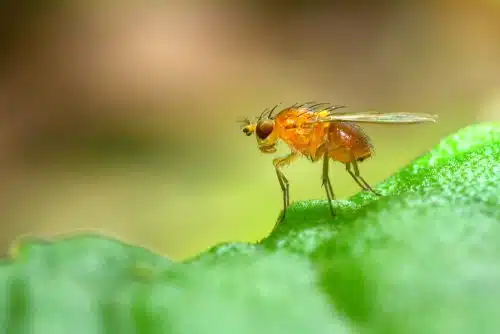Using artificial intelligence made it possible to produce anti-cancer drugs using genetically engineered flies

When Mr. Rogers' (pseudonym) doctors realized that he had colon cancer in the most advanced stage - with metastases in various parts of the body, which had already developed immunity to several drugs - they offered him to participate in a first-of-its-kind study. He agreed, and within a year or so he discovered that he was no longer alone in the fight: 300,000 flies, each genetically engineered to mimic Rogers' medical condition, joined the fight against cancer.
Rogers' cancer cells carried nine cancer mutations, each of which caused the cells to respond differently to drugs, chemotherapy, radiation and other conventional ways of dealing with cancer in humans. The nine mutations together gave Rogers' cancer cells the ability to defy multiple treatments. Doctors realized that it is not possible to effectively fight cancer at such an advanced stage, with such a large number of mutations, by conventional means. And so, they chose to create the army of genetically engineered flies, also known as "animal avatars".
The researchers genetically engineered a huge number of flies so that their cells would carry the same cancerous mutations as Mr. Rogers' cells. It was not such a difficult task, because fruit flies are very small (much smaller than the flies we are used to in Israel) and multiply quickly. From the moment their number was large enough, the researchers employed a robotic system that nurtured the flies, fed them, and most importantly - tested 121 different drugs on them, each one separately, and also in combinations.
It is a sophisticated and smart system for finding new ideas for personalized medicines. Every person is different, and cancer tumors are also different. And yet, today we must deal with cancer cases by relying on results discovered during treatments in other humans, on 'similar enough' cancer tumors. Obviously this is not an optimal situation. Experiments on the animal avatars, on the other hand, can provide us with more accurate answers regarding drugs and treatments that are exactly suitable for the type of cancer that each patient has. After all, the flies are affected by the exact same cancer, and any experiment conducted on them will be able to provide meaningful answers for the original patient as well.
In the case of Mr. Rogers, the robotic system identified a number of drug combinations that kept the flies alive and slowed the spread of cancer in their intestines. Doctors eventually chose to treat Mr. Rogers with a combination of an anti-cancer drug called tramatinib, and an osteoporosis drug called zoledronate. A combination of these two produced the best results in treating flies - and managed to delay the spread of Mr. Rogers' cancer for 11 whole months. After this time, the cancer cells in his body apparently accumulated new mutations, and were also able to cope with the unusual combination of the drugs. Rogers died after three years.
It is important for me to clarify that no large-scale experiments have yet been conducted to prove that the use of animal avatars optimizes the treatment of cancer or other diseases. Nevertheless, it is clear that there is potential here for streamlining the treatment and adapting it most precisely to the type of cancer that attacks the individual. Either way, I'm particularly excited about the robotic system demonstrated in the current study. Thanks to her, an operation of breeding flies and testing drugs, which should have required a small army of expensive laboratory workers, was carried out almost completely automatically. The cost of this type of research in the past would have been astronomical. Today it is... well, still astronomical, because the system is still new. But in five or ten years, we will all be able to receive similar treatment at a reasonable cost (that is, still a very high cost, but which will be mostly covered by medical insurance).
We see here how robotic systems can change the ways of treating diseases of all kinds. But why stop here? It is clear that the next step is the creation of "human avatars" - hundreds of thousands of reconstructions of human tissues, each of which comes from the patient's original cells - and experimenting on them in the laboratory in real time. And even if this idea sounds strange today, the robotic systems of the future will be able to enable it at a relatively low cost.
This is another example of the way in which artificial intelligence can help us better understand existing diseases: not only by analyzing the diseases using the existing tools and generating insights, but also by giving the possibility to work with new tools, or those that did not seem practical before. As artificial intelligence continues to be perfected and improved, the rate at which more advanced solutions to diseases of all kinds will be found will increase.
Link to the original article in Science Advances

2 תגובות
Simply amazing! What fun to read
Interesting article